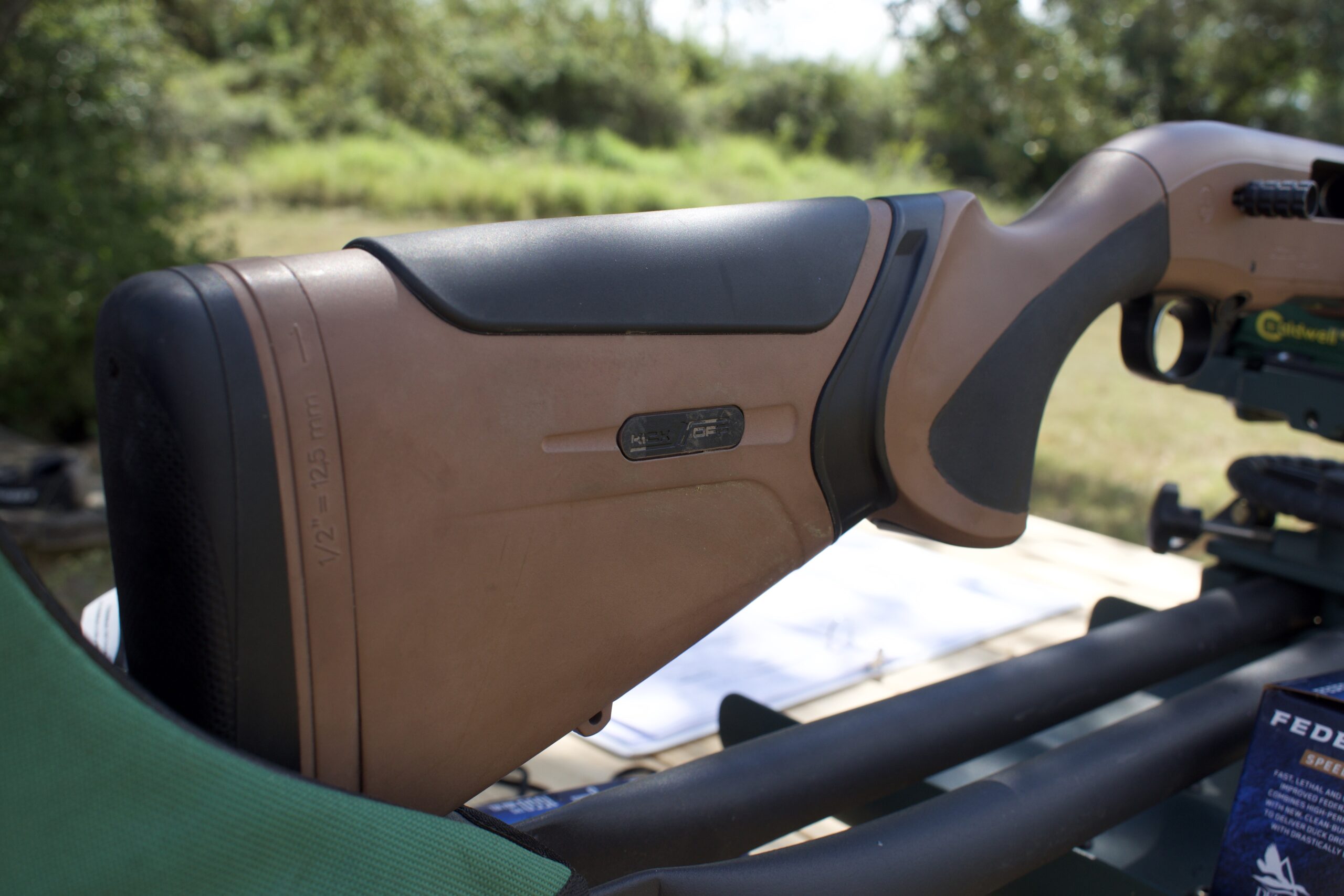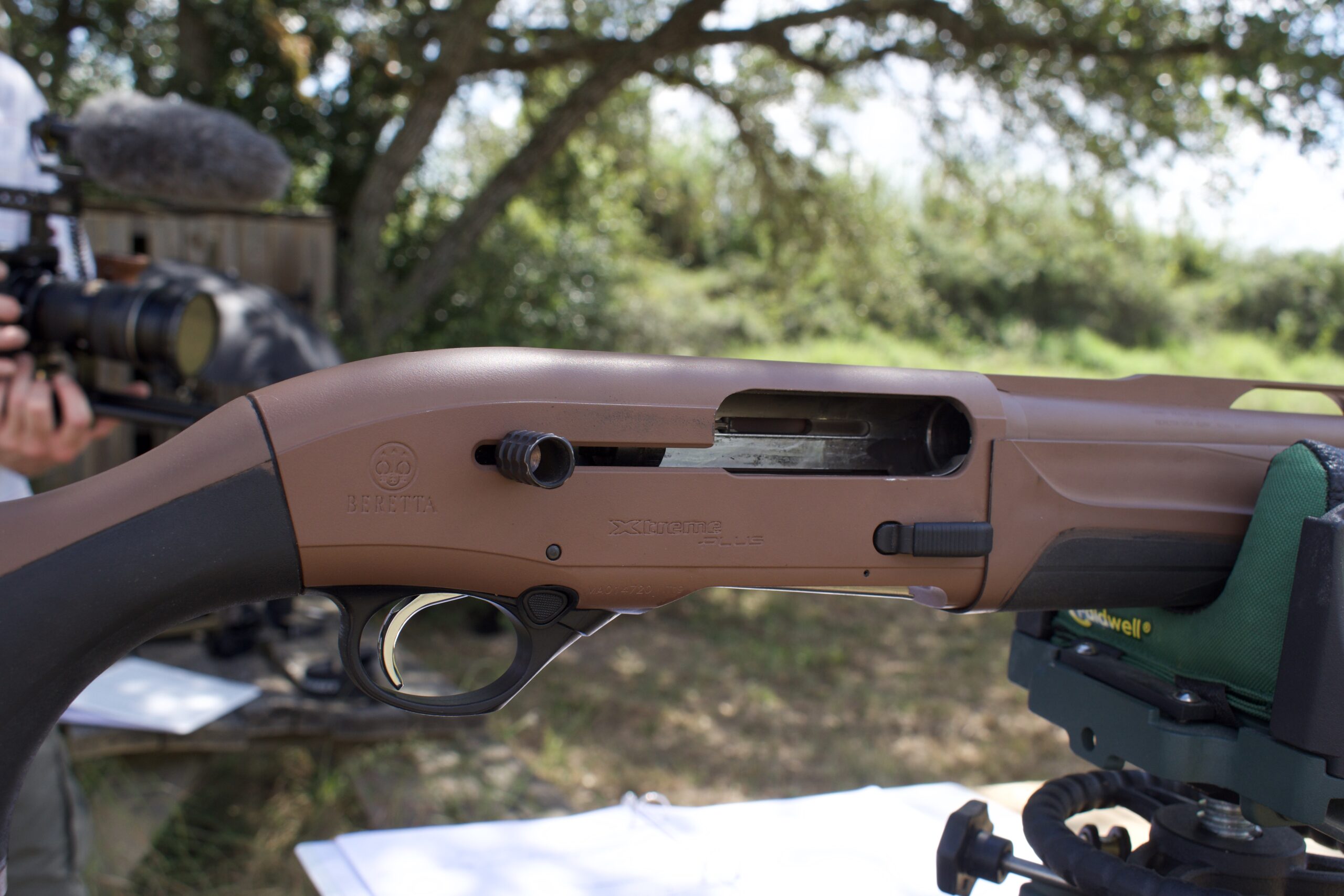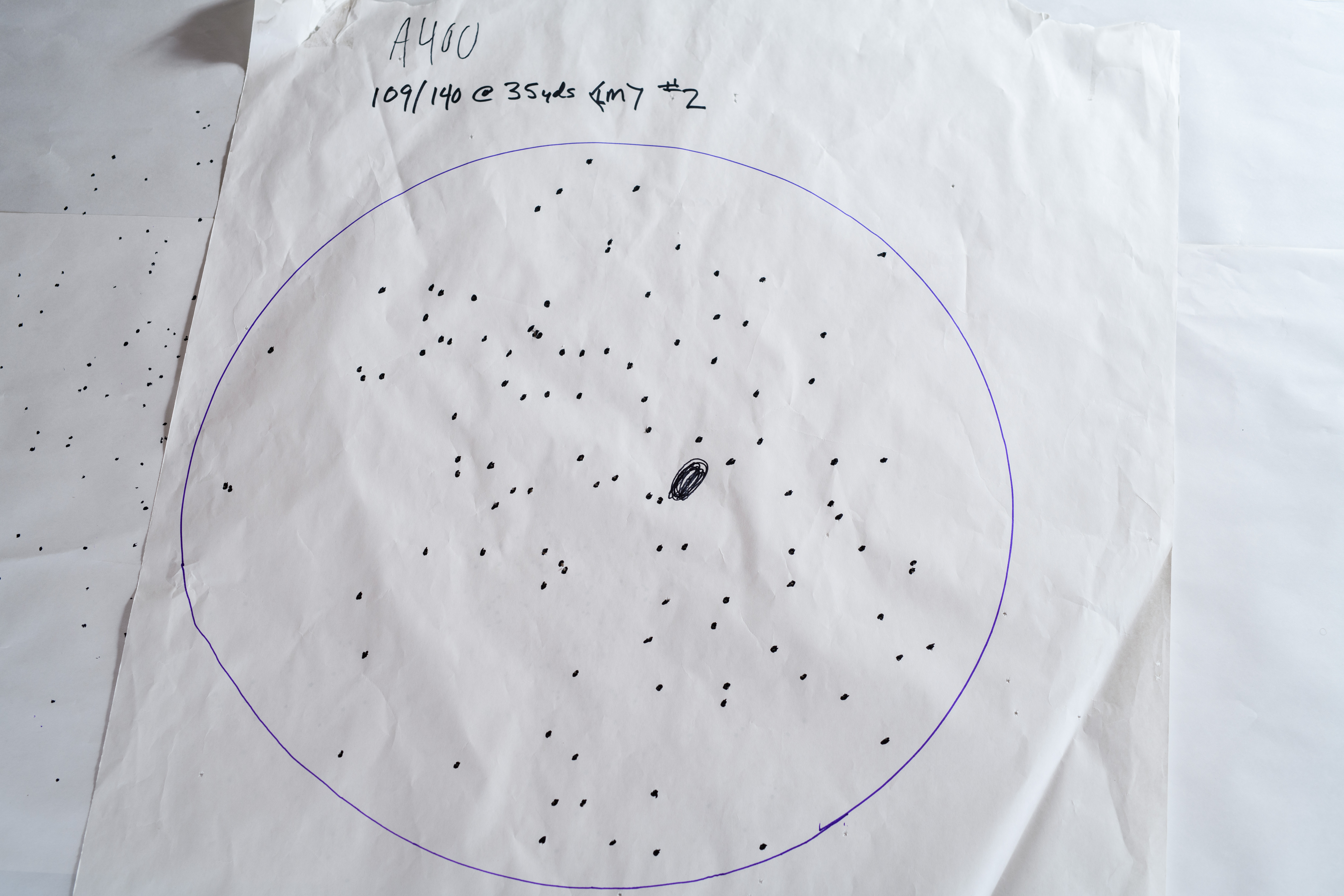It’s impossible to pick up the Beretta A400 Xtreme Plus shotgun and not immediately feel the quality and see the precision of this gas-driven auto-loader. Then you bring the gun to your shoulder, fire it, and realize that it’s one of the softest 3½-inch, 12 gauge shotguns you have ever shot. You must pay a higher price for that experience of course (MSRP is $1,749), but Beretta has been making some of the best semi-autos the hunting world has seen since the A300 series shotguns were introduced in the early 1980s. When you buy a Beretta, you’re investing in gun that will likely last generations.
The Beretta A400 Xtreme Plus is the the pinnacle in Beretta’s long-running history of building a semi-auto shotgun that just about every waterfowler wants in their gun closet…probably right next to workhorses like their 3-inch shotgun the A390 and Xtrema2. Here’s a closer look at what makes the A400 Xtreme Plus our Editor’s Choice of the best duck hunting shotguns.
Table of Contents
Beretta A400 Xtreme Plus Specifications and Features
These are the standard options that are included in the Beretta A400 Xtreme Plus shotgun:
- Gauge: 12
- Action: Semi-auto
- Capacity: 3+1
- Chamber 3½-inch
- Barrel type: Optima Bore HP Steelium Plus
- Barrel length: 26-, 28- (tested), 30-inch
- Chokes: 5 Extended (F, M, IM, IC, C)
- Front sight: Fiber-optic
- Finish: synthetic, Realtree Timber, Max-5, Mossy Oak Bottomland, Kryptek Wraith, TrueTimber
- Length: 49½ inches
- LOP: 14.3 inches
- Trigger pull: 5.1 pounds
- Overall weight: 7.8 pounds
- MSRP: $1,749
The Kick-Off Mega System Drives the Beretta A400

The lack of recoil that shooters experience is what sets the Beretta A400 apart from competitors like Benelli, Browning, and Winchester. Beretta calls it the Kick-Off Mega, which is a three-spring hydraulic system inside the stock that softens the blow of recoil. Part of the Kick-Off3 system is a long spring-loaded steel rod contained in the pistol grip of the stock, which acts as a buffer as the bolt moves reward. There’s also a rubber recoil pad on the buttstock and another rubber pad where your cheek meets the stock. That rubber pad will lessen any recoil you may feel, but it also acts as a good cheek weld, to keep you “in the gun” when ducks are swinging through the decoys.
I’ve shot light target loads, 1 1/8-ounce duck and goose shells, and 2-ounce lead turkey ammo through the Beretta A400 Xtreme Plus shotgun, and it’s never thumped me. You can certainly tell the difference when you’re shooting those different charge weights, but it only feels like deeper pressure on your shoulder. It’s kind of like the difference in getting a light massage versus a deep tissue.
The A400 Was Built For a Specific Purpose
You won’t see many duck guides carrying the A400 Xtreme Plus. That’s not a strike against this gun. It’s just heavier than most modern auto-loaders, and guides are tasked with carrying more gear than their clients, so they will often trade a bit more recoil for a lighter gun. Plus, they don’t shoot as much as the clients. It’s definitely a blind hunter’s gun; built for folks that boat in or don’t have to make long walks down a levee to a public stake. You certainly can tote this gun into the marsh—I have and so do many others—but it is much more cumbersome than a Benelli or Browning auto. While it may not be a joy to carry, once you get to your hunting spot there are few guns that can compete with the accuracy and soft recoil of this Beretta.
It’s definitely not meant to be an upland shotgun. It will kill a flushing rooster just fine, and if you pheasant hunt occasionally, the A400 will serve your purpose. But if you’re a dyed-in-the-wool bird hunter, who loves hunting behind pointers every weekend, there are better guns in the Beretta stable, like the A400 Action 20-gauge, or Beretta’s high-end double guns.
Throw a sling and red-dot optic (the receiver is drilled and tapped for one) on the A400 and it makes a fine, albeit weighty turkey gun. And it’s a hell of a clays gun, cycling 2 3/4-inch, 1-ounce target loads with ease. You won’t see a diehard skeet shooter pick this model of A400 (there is a clays version), but again, if you’re an occasional target shooter, this gun can do the job. It’s length, weight, and balance point, which is perfectly centered, make it easier to swing on clays than light autos that are easy to get moving but tougher keep in front of the bird.
Beretta’s A400 Has Superior Ergonomics
When you first hold the A400 in hand, it feels like a heavy gun, even though it’s only 7.8 pounds. But by today’s duck gun standards, that’s heavy (the A400 Xtreme Plus was only outweighed by the Remington 1100 and an old Browning BPS, that were part of our Texas gun test). It’s also a long shotgun at 49½ inches with a fat fore-end that folks with smaller hands might have trouble getting a good grip on.
But, as mentioned previously, long, heavy guns are often easier to shoot than shotguns that are a full pound (or more) lighter, which many modern auto-loaders are. It was advantageous to shoot the A400 on flittering bluewing teal that couldn’t decide if they would splash down in the decoys or rocket through them at 40 mph. With a big gun, your firearm is more apt to be in motion because it’s harder to stop and that’s a good thing when you’re shooting at ducks with unpredictable flight patterns. Field & Stream Shooting Editor Phil Bourjaliy has told me many times, that the bigger and clunkier a gun looks and feels, the easier it is to shoot, and that’s certainly true of the Beretta A400 Xtreme Plus.
It doesn’t have the pointy feel of a Benelli when you first start shooting the A400, but most hunters do shoot it well. The four of us certainly did in Texas, and anyone we handed the gun off to at the clays range shot it as good as their own personal guns, or close to it. That’s a staple of Berettas—they fit just about anyone.
The A400 Xtreme Plus Has Plenty of Extras

Like most of today’s duck guns, the Beretta A400 features an enlarged loading port and trigger guard, which makes it easier to load shells and pull the trigger with gloved hands. I performed both operations with a thick set of gloves on and had no issues. There’s also an extended charging handle for better grip when you’re unloading the gun, and a large lever-like bolt release button.
Once you open the bolt by depressing the button under the carrier, do be careful of accidently touching off the bolt-release button. It’s so large and sensitive that when I was walking an unloaded A400 out of the marsh on my shoulder I hit the bolt-release and it closed the bolt, pinching my shirt into the action. I also caught my fingers in the receiver on an accidental closure—it does not feel good.
There is no cut-off lever on the left side of the A400 Xtrem Plus. The first generation of the gun had one. It allows the bolt to remain open and keep the remaining shells in the magazine without entering the carrier and being lifted into battery. This is a feature some hunters use if they’re duck hunting and a big, greasy 12-pound resident honker starts winging its way towards the decoys. Press the lever, eject your 3-inch, No. 4 duck shotshell and you could slide in a load of BBs. But you won’t have that convenience with the new model.
The fore-end cap is easy to take off, requiring just a half-turn to remove it. That’s handy if you need to perform a quick field strip of the gun. The cap is also neon green on the inside rim, so if you drop it in the bottom of the pit blind at 5 a.m., it should be a little easier to find under the glare of your headlamp.
A Look Inside the A400
If you’ve ever cleaned a Beretta A390, you know that there are multiple pieces to remove and clean once the fore-end comes off. Beretta has made it much easier to perform maintenance on its guns with the A400 line. Once the fore-end is removed, the barrel slides out of the receiver. The gas piston is located inside a metal cylinder under the barrel and simply slides out for cleaning. To remove the bolt assembly, you depress the rotating bolt head, take out the bolt handle, and the bolt, bolt carrier, piston stock, and recoil spring all come out in one piece. Removing the bolt handle can be tricky. You have to push the bolt head back into the receiver until it starts to rotate, then the handle should come free.
The trigger assembly is held in place by a single trigger pin, which makes removing and re-insertion fast.
Testing the Beretta A400 Xtreme Plus

The A400 Xtreme Plus we shot had no issues cycling. A team of four editors—myself included—from Outdoor Life and Field & Stream tested the gun—along with 16 others—on sporting clays and bluewing teal for three days in Sept. 2021, at Pintail Hunting Club in Garwood, Texas. We put the gun through as much hell as we could find, dropping it in the water and muddy marsh, running hundreds of rounds through it, and letting it sit in the back of the truck with a bunch of other dirty guns, never cleaning it. The A400 didn’t hiccup once. It also was one of the fastest-cycling guns in our test, thanks to the Blink system, which Beretta touts as 36 percent faster than other shotguns. We couldn’t put an actual percentage to it, but it was a damn fast gun.
You may recall, the first version of the A400 did have some trouble ejecting 3- and 3½-inch shotshells. It wasn’t every gun, mind you, and I never experienced that issue with any A400 Xtreme I shot, but did witness others have a problem. I saw it struggle most with 3½-inch Remington Hypersonic and during snow goose shoots when the gun had to rapidly cycle an extension magazine full of 3-inch ammo. I asked different Beretta sales reps and engineers at the time what was going on with the gun, but the answers were always murky.
This gun doesn’t seem to have the same cycling issues. I’ve only seen the A400 Xtreme Plus fail to eject a spent shell on one hunt. It was an extremely cold day in February and my buddy was shooting a brand of shotshell that flared at the business end of the hull after ignition. And those “petals” would hang on in the action. I can’t say whether it was the gun’s fault or the shotshell’s; it’s just what I observed. And my friend has shot the same brand before and experienced clean ejection. So it could have been a bad batch of ammo.
The same friend that had the malfunction in February shot his A400 on snow geese a few weeks later after a good cleaning in warmer weather, with a different brand of ammo, and it ran through 10 rounds (he had an extension magazine on it) in multiple volleys, no problem. Another hunter also was shooting the A400 Xtreme Plus on that trip, and had no issues with his gun, which was also equipped with an extension mag.
How the A400 Patterned
Since we tested so many guns (17) in Texas, we picked one distance (35 yards) to pattern each gun from. The industry standard is 40 yards, but we wanted to showcase the patterns at a more realistic yardage for duck hunters. Plus, your average hunter should keep shooting distances inside 35 yards. Once you get out to 40 it takes more skill, and the likelihood of crippling birds goes up.
We patterned each gun with Federal Speed Shok 3-inch, No. 2s with a muzzle velocity of 1,550 fps and a charge weight of 1 1/8 ounces.

The Beretta A400 shot 60 percent above and 40 percent below point-of-impact. It’s a gun that shoots where you point it. Its best pattern put 109 of 140 (78 percent) pellets inside the 30-inch circle. That wasn’t the best overall pattern of the shotgun test, but it was one of the most even. It filled the target with no holes that a duck could fly through. Some guns like to shoot right, left, high or low, but the A400 was dead on. You cover a mallard with this gun and it will kill it.
Final Thoughts on the Beretta A400 Xtreme Plus
If you’re a gas gun stalwart and have the financial means, there is no better auto-loading duck hunting gun than the Beretta A400. Anything Beretta got wrong with the first generation of this gun, it fixed with the new model. Yes, it’s a little clunky and heavy, but you can’t argue with its accuracy, reliability, and light recoil. Plus, this shotgun is going to be in your family far past your lifetime. When you take that into consideration, $1,800 isn’t such an exorbitant price tag for gun that could someday belong to your grandchildren.










































